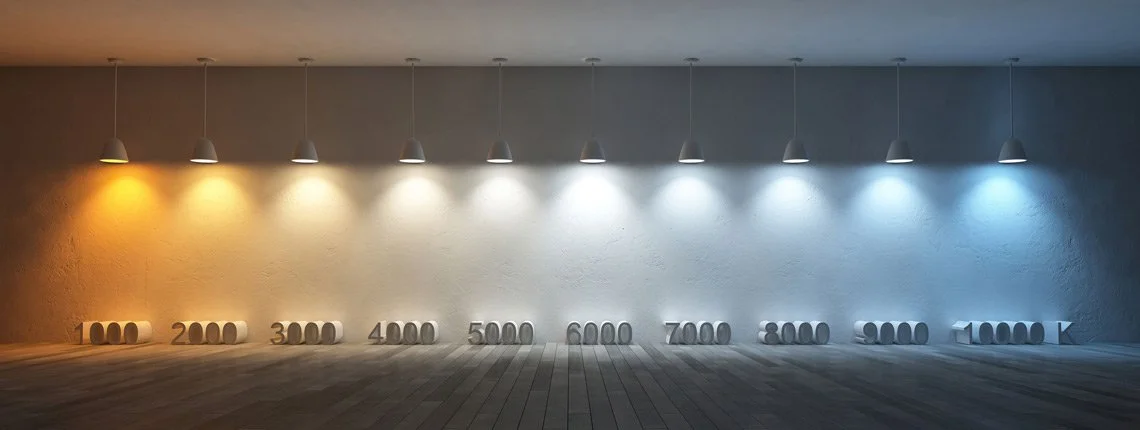
When renovating your home, lighting isn’t just about brightening up a space—it’s about creating a mood, saving energy, and even enhancing the overall aesthetic of your home. The right lighting choices can transform any room. Here’s a quick guide to help you navigate the bright world of bulbs and lighting.
Types of Bulbs: What’s Best for Your Space?
Understanding the different types of bulbs can help you choose the perfect fit for each room. Here are the main options:
Incandescent Bulbs: The classic option, but these are on their way out. They provide warm light but are not energy-efficient.
Compact Fluorescent Lamps (CFLs): These are energy-efficient and last longer but can sometimes take a moment to reach full brightness.
Light Emitting Diodes (LEDs): The MVP of modern lighting! They’re efficient, long-lasting, and versatile in terms of brightness and color options.
Halogen Bulbs: These are a brighter, more efficient alternative to incandescent bulbs, but have a shorter lifespan than LEDs and get very hot.
Smart Bulbs: These bulbs offer full control over brightness and color via an app, and are perfect for creating customized lighting setups.
Why LEDs are a Bright Idea
LEDs have revolutionized the lighting industry. Here’s why they’re the top choice for any renovation project:
Energy Savings: LEDs use up to 75% less energy than incandescent bulbs, helping reduce electricity bills significantly.
Longevity: A single LED bulb can last up to 25,000 hours or more—think years, not months!
Environmental Benefits: Using less energy means a smaller carbon footprint. Plus, LEDs don’t contain harmful substances like mercury contained in fluorescent bulbs.
Customization: From dimmable options to color-changing features, LEDs let you control the ambiance in every room.
Watts, Lumens, and Color Temperature
When shopping for bulbs, you’ll notice labels with watts, lumens, and Kelvin. Understanding these terms ensures you pick the right bulb for your space.
Watts (Energy Consumed)
Watts is a measurement of energy usage – not brightness or light output. Therefore, watts are not an effective measurement of brightness for modern bulbs like LEDs.
Lumens (Brightness)
Lumens measure light bulb brightness, or light output. For example, an LED bulb producing 900 lumens is equivalent to the brightness of a 75 watt incandescent bulb, but uses far less energy (only 13 watts).
Kelvins (Color Temperature)
Kelvin (K) measures the warmth or coolness of the light emitted by a bulb. Lower Kelvin scores (2,700K–3,000K) produce warm, yellowish light suitable for cozy spaces. Higher Kelvin scores (4,000K+) produce cool, bluish light ideal for task-oriented areas. We typically recommend using the same Kelvin bulbs throughout your project to maintain consistent lighting throughout your home.
Important Note:
The Kelvin score does not affect the bulb’s brightness. Cooler tones may appear brighter due to their bluish tint, but actually provide the same lumens as warmer tones.
It is crucial to make your material selections such as paint, carpet, tile, etc. under the same lighting conditions that you plan to use in your home. For example, don’t pick your paint color under 4,000K fluorescent lights if you plan to use 3,000 LEDs in your home.
Choosing the Right Bulb Shape and Fixture
Not all bulbs are created equal, and selecting the right shape for your fixtures is essential.
Pro Tip: Always read the label on your fixture to determine compatible bulb shapes and wattage limits.
Choosing Based on the Room
To get the best use out of your lights, select bulbs that cater to the needs of each specific room. Here are some ideas.
Living Room
Living rooms are usually all about relaxing, which is why experts recommend using low-level lighting to keep the mood calmer. Warmer-toned light tends to look best in living rooms. LED light bulbs that are between 2,700K-3,000K and 1,000-2,000 lumens usually look best in living rooms.
Kitchen
For kitchens, the best LED light bulbs will be bright enough to provide task light for things like cooking, eating, and cleaning. Brighter light bulbs between 3,000-4,000 lumens will make it easier to prep food and cook meals. Typically light bulbs between 3,000K-4,000K are great for creating a bright, task-oriented environment. In the dining area, opting for 2,700K-3,000K bulbs with 2,000-4,000 lumens can create a cozy and relaxed dining experience
Bedroom
Did you know that light color temperatures can affect sleep? If getting a quality night’s rest is a priority, warmer-toned light bulbs with lower brightness levels are typically best for bedrooms. Installing cool-toned light bulbs in a bedroom is typically not encouraged. Warm LED light bulbs with 2,700K-3,000K and 1,000-2,000 lumens are typically recommended.
Bathroom
Since bathrooms are task-oriented areas, your lighting choices should reflect that. Moderate to bright light bulbs are typically a good addition to any bathroom so you can properly see what you’re doing. The amount of lumens needed for bathroom lighting will depend on the size of the space. Around 50-75 lumens per square foot is typically recommended in bathrooms. Color temperatures between 2,700K-3,000K provide a warm and inviting feel, while still providing optimal visibility.
Discovering What’s Best for You and Your Home
Our team believes every detail matters—including the lighting that brings your home to life. Whether you’re looking to upgrade a single room or reimagine your entire home, we’re here to help you shine.

Want more?
Check out more articles and stories on our blog! Subscribe to our newsletter to stay up to date on the latest stories!








